Abstract
Sera from 1661 persons in 12 age groups from 0 to 79 years were titrated for toxoplasma antibodies in the indirect immunofluorescence test. The sera were collected from patients with symptoms suggestive of acute, mainly respiratory, viral infections. After the first year of life, the prevalence of antibodies started to rise, reaching 59% between 40 and 79 years of age. From the prevalence of antibodies in different age groups the annual infection risk, i.e, the risk of a non-immune person acquiring toxoplasma infection, was estimated for successive age periods. The estimated annual infection risk increased from 0 . 5% in early childhood to 3% during adolescence and early adult life. Approximately 70--80% of females entered the age of reproduction without evidence of seroimmunity to toxoplasma. The risk of primary infection during pregnancy was estimated from the age distribution of parturient women in The Netherlands in 1975 and the age-specific incidence of primary infections, i.e. the incidence in the total population of susceptible and immune persons. This incidence of primary infection decreased from 1 . 62% per 9 months at the age of 17 1/2--20 years to 0 . 37% at the age of 37--45 years. The incidence of primary infections in pregnant women was estimated to be 1 . 25%.
Full text
PDF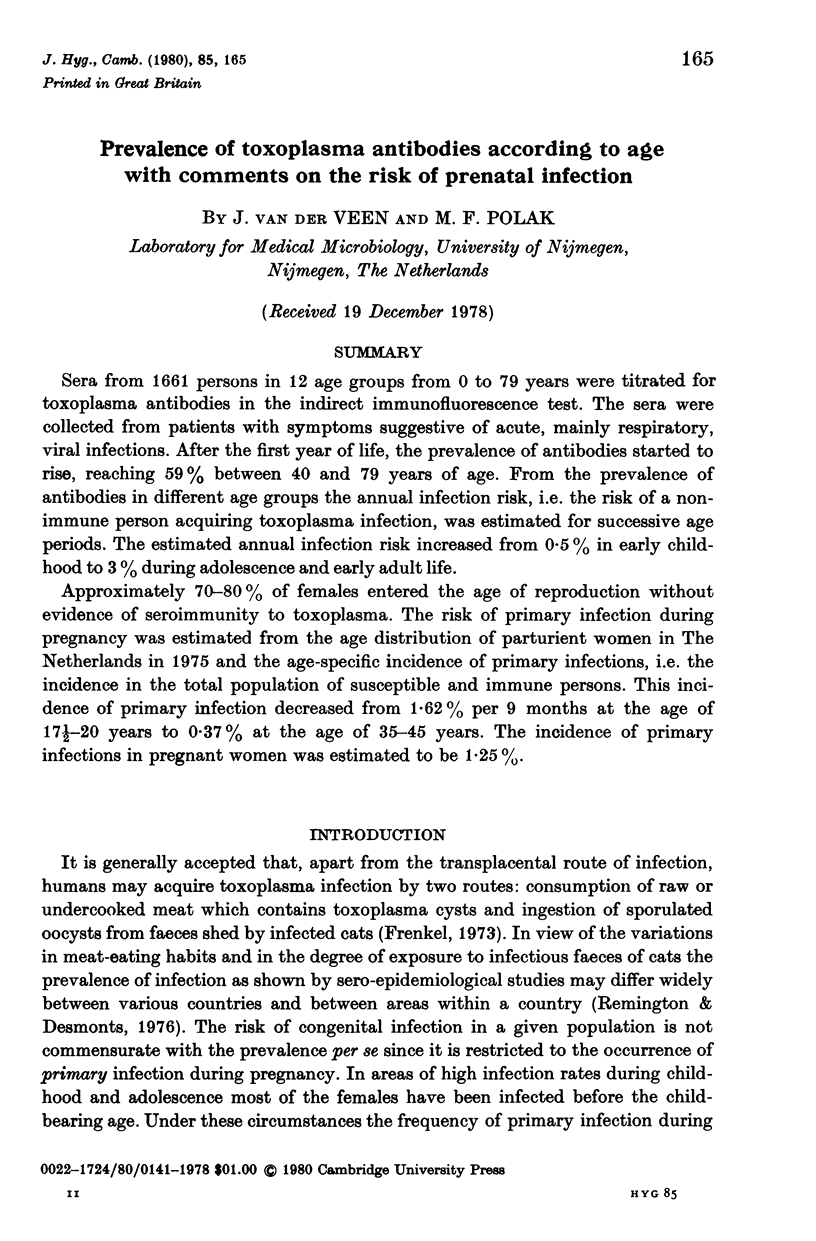
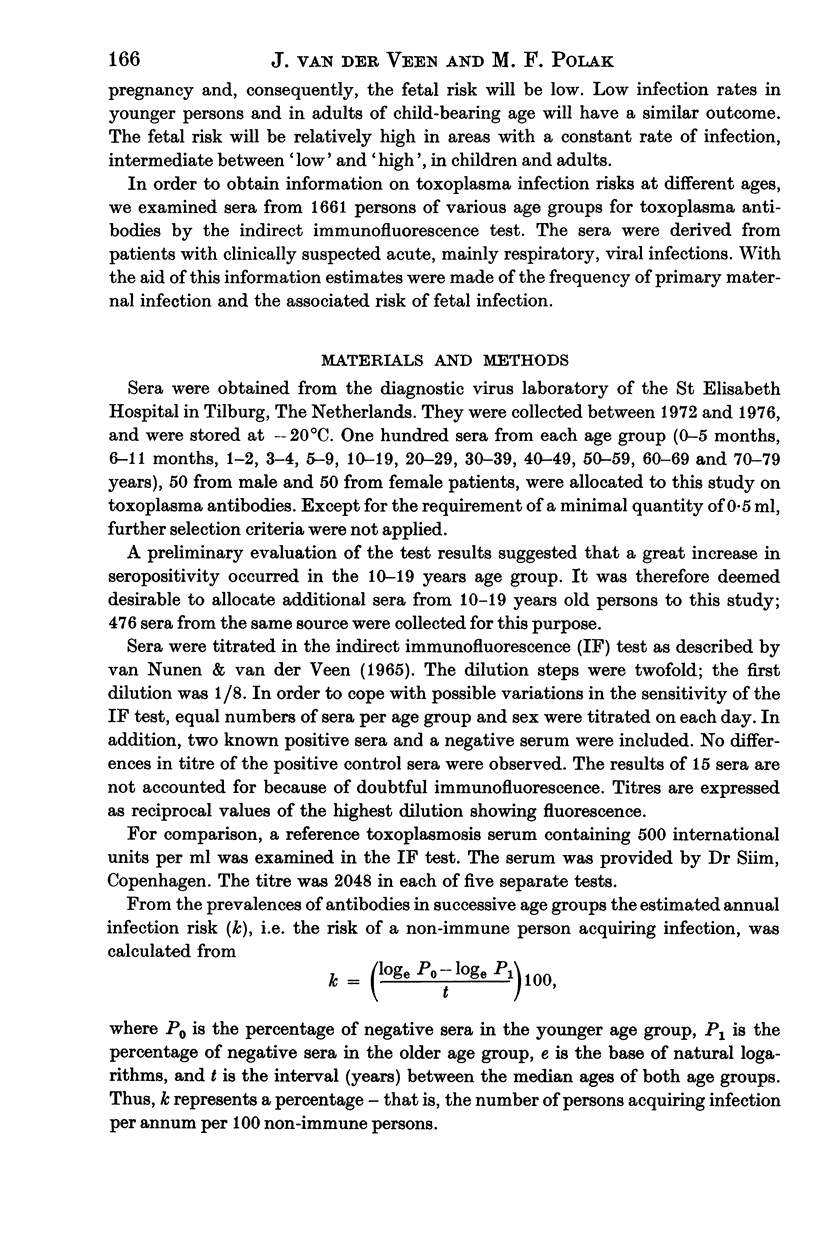
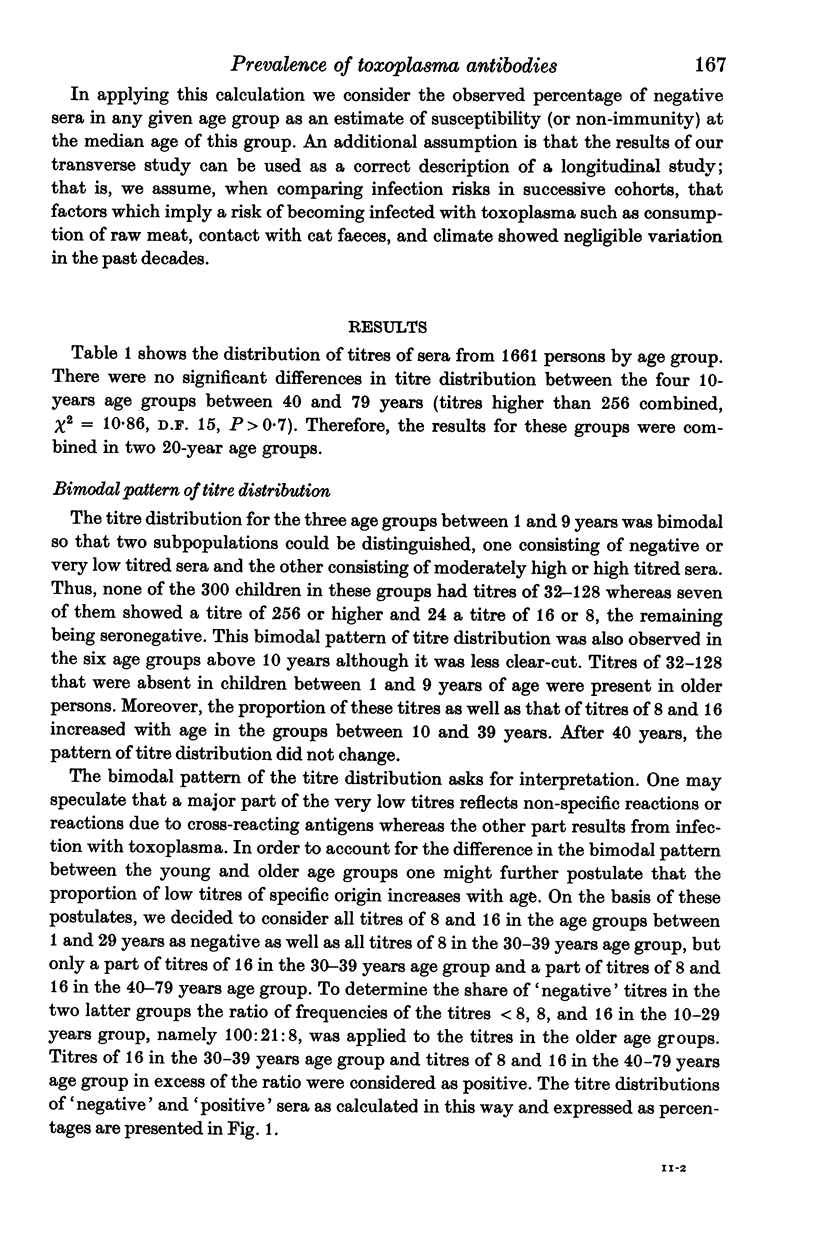
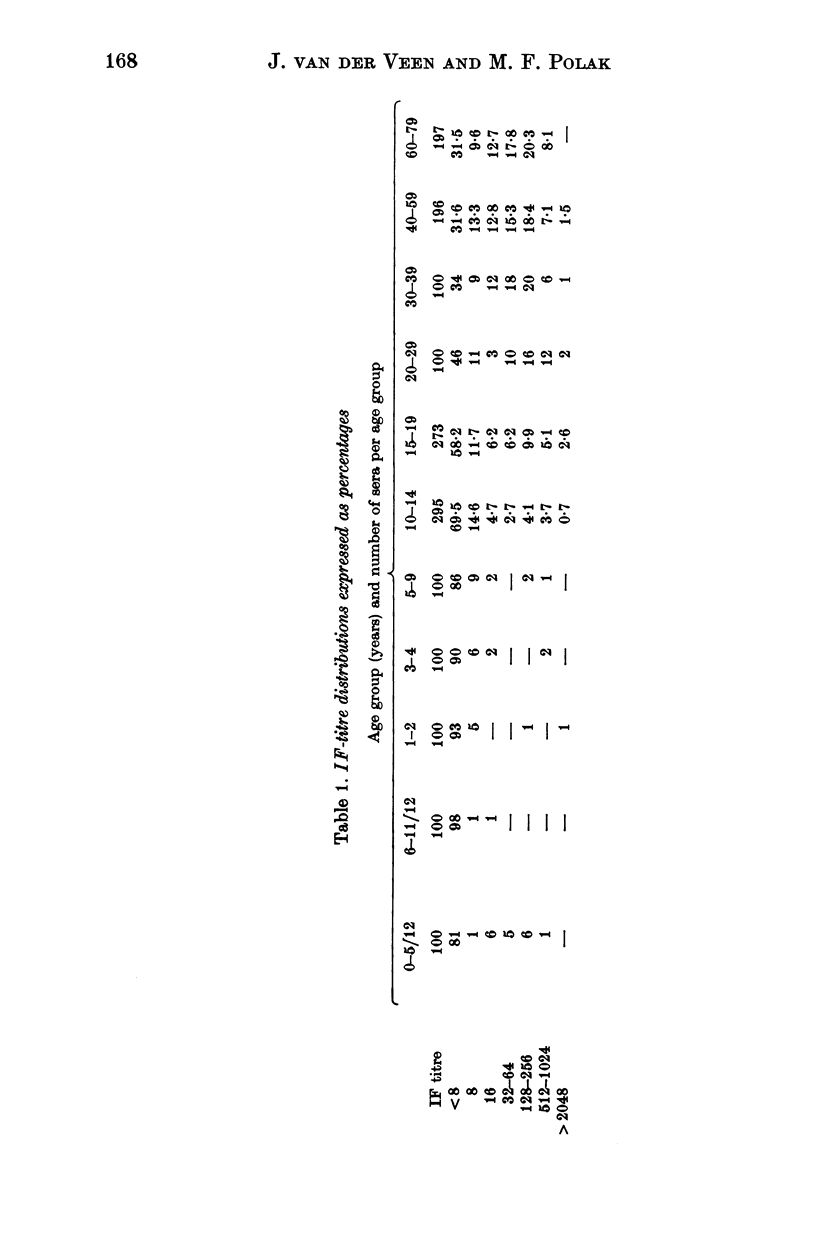

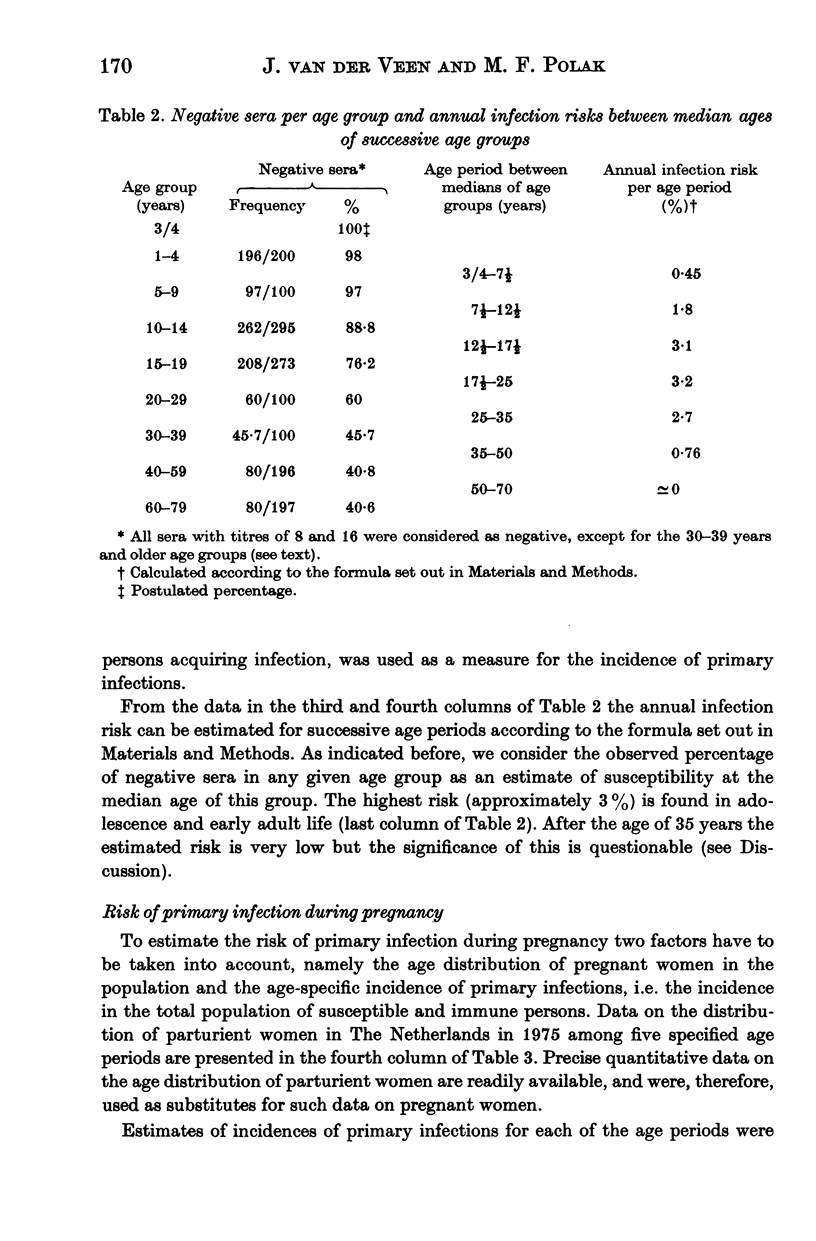
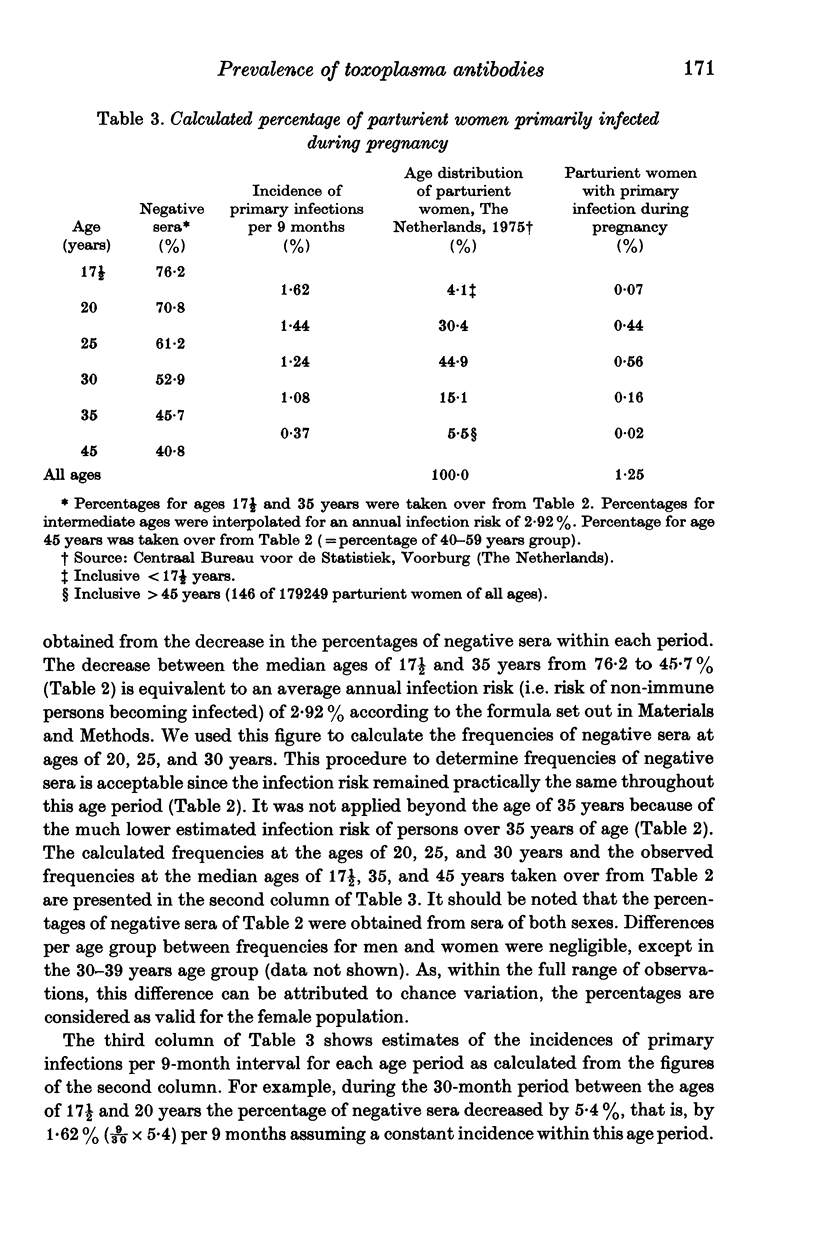

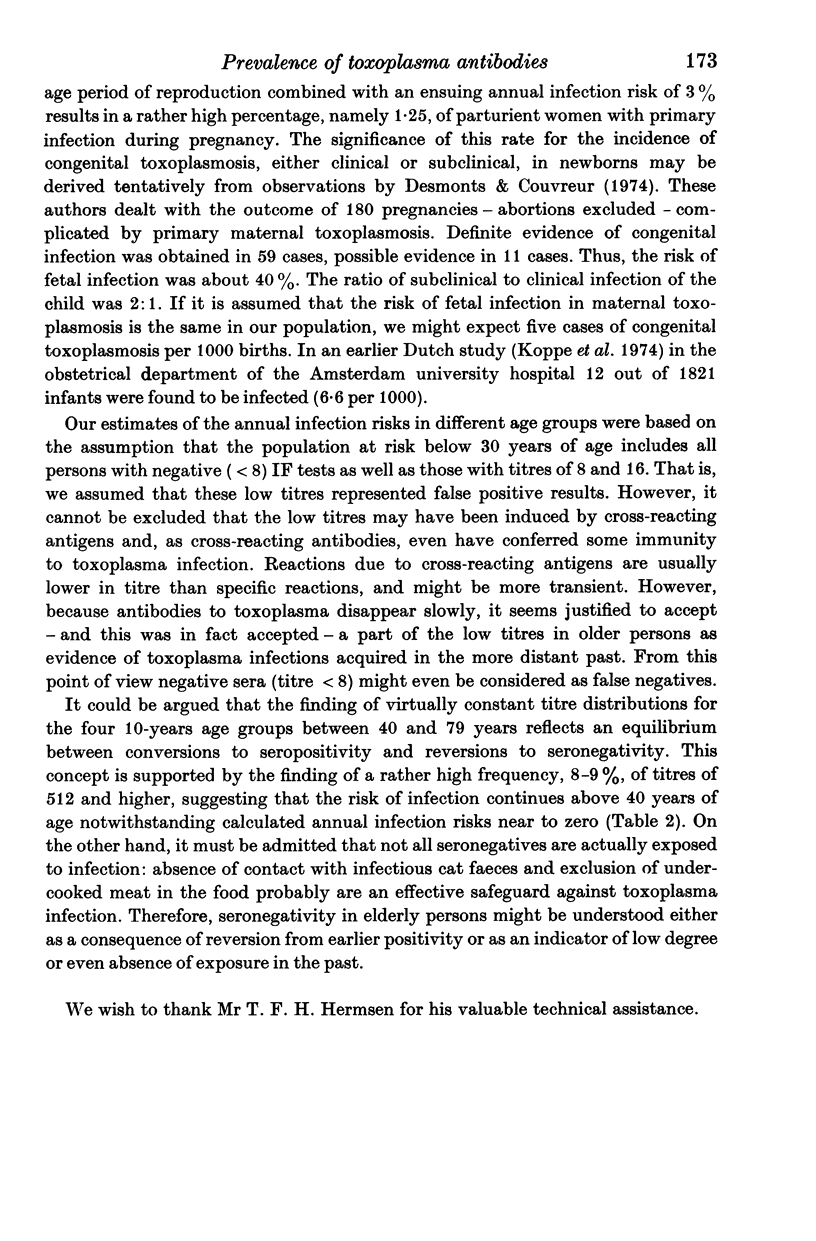
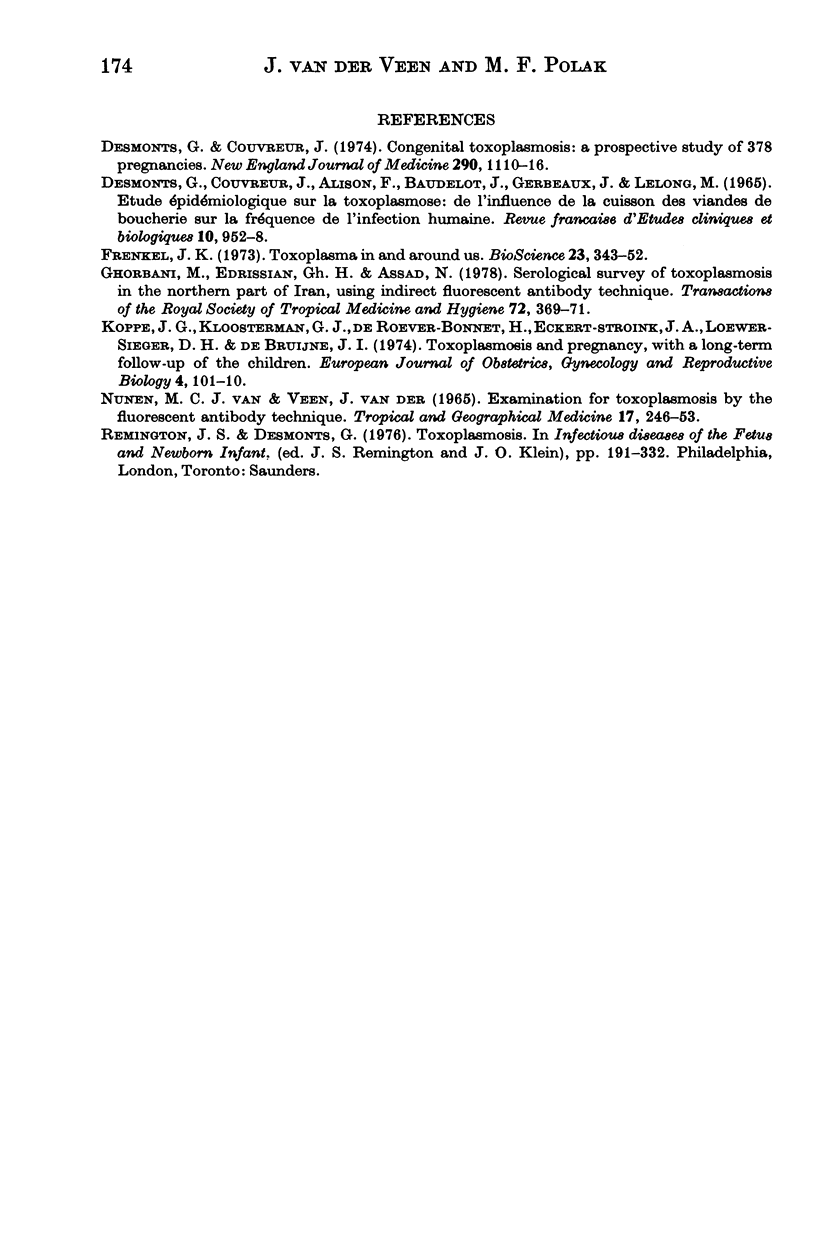
Selected References
These references are in PubMed. This may not be the complete list of references from this article.
- Desmonts G., Couvreur J., Alison F., Baudelot J., Gerbeaux J., Lelong M. Etude épidémiologique sur la toxoplasmose: de l'influence de la cuisson des viandes de boucherie sur la fréquence de l'infection humaine. Rev Fr Etud Clin Biol. 1965 Nov;10(9):952–958. [PubMed] [Google Scholar]
- Desmonts G., Couvreur J. Congenital toxoplasmosis. A prospective study of 378 pregnancies. N Engl J Med. 1974 May 16;290(20):1110–1116. doi: 10.1056/NEJM197405162902003. [DOI] [PubMed] [Google Scholar]
- Ghorbani M., Edrissian G. H., Assad N. Serological survey of toxoplasmosis in the northern part of Iran, using indirect fluorescent antibody technique. Trans R Soc Trop Med Hyg. 1978;72(4):369–371. doi: 10.1016/0035-9203(78)90129-3. [DOI] [PubMed] [Google Scholar]
- van Nunen M. C., van der Veen J. Examination for toxoplasmosis by the fluorescent antibody technique. Trop Geogr Med. 1965 Sep;17(3):246–253. [PubMed] [Google Scholar]


